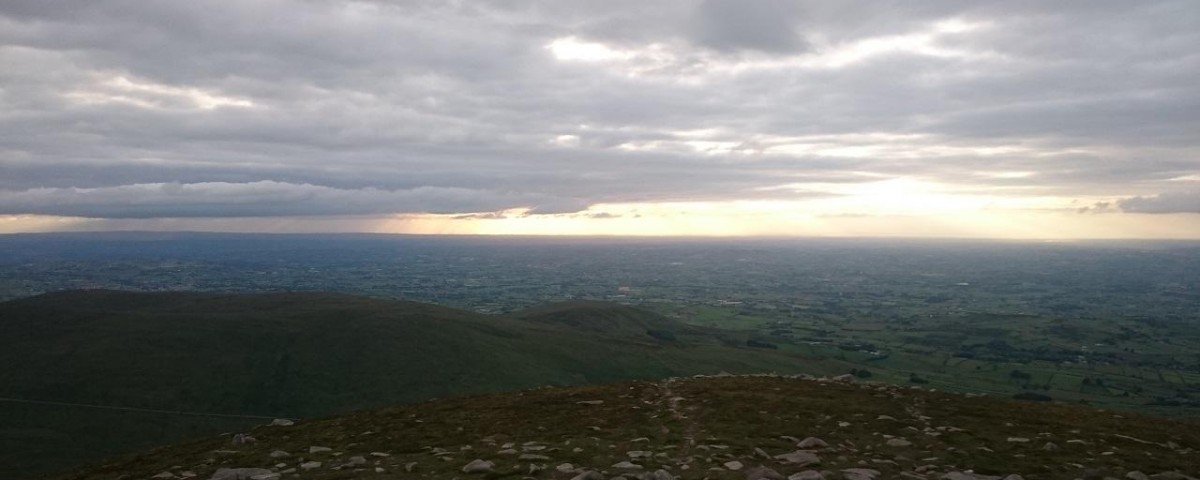It is very rewarding and enjoyable to get out into the hills, but it is also very important to remember that the hills can be a dangerous place. Check out my tips and safety information below to help make your time in the hills safe and enjoyable.
Check the weather forecast (and know what time sunset is).
The weather, at even small elevations, will always be much more unpleasant that the weather at sea level. Temperatures will be much lower and wind speed will be much higher. Hills and mountains will often create their own wind directions and cloud cover. All of these factors can turn nice weather at sea level into potentially dangerous weather in the hills.
It is important when checking the weather forecast to check sources that provide the wind speed and conditions at various altitudes and not just at sea level.
Bring enough layers.
On a warm sunny day at sea level it can be very tempting to set off into the hills with very few layers. As you ascend, however, the temperature will drop and the wind speed will usually increase. Always carry a backpack with an extra fleece or warm top. Always carry a wind proof / waterproof jacket to be prepared for rain and also to protect you from the wind to help keep you warm. A hat and gloves are also a good idea. Even in the summer months, high winds at elevation can make it very cold. As you are ascending you will usually feel warm and will probably sweat. It is when you stop to enjoy the views on the summits that you will need to make use of the extra layers.
The proper clothes also extends to your footwear. Many people wear trainers in the hills and this is ok in fine, dry conditions on good tracks. However, many routes in the hills will often be wet, uneven and slippery. A good pair of hiking boots with some level of water resistance, good grip and ankle support is recommended.
Know your own ability.
If you are planning to climb a peak or walk a route in the hills you should always know approximately how long it will take you based on your own ability. Many people underestimate how strenuous hill walking can be. It requires very specific muscle conditioning. Running or spending time at the gym does not necessarily mean that you will be in perfect shape for hillwalking. If you are totally new to the hills then you can consult with others to get an idea of how long it might take you for any specific route. This information will allow you to plan your day, how much food you might need and importantly, how much daylight you will have. Headlamps are inexpensive and lightweight. It is a good idea to carry one in your backpack as part of your standard hiking kit in case you get caught out after dark.
Tell someone where you are going.
If you are walking in the hills by yourself it is vital that you tell someone, a close friend or partner, where you are planning to go and when you expect to be back. That way they can raise the alarm if something were to happen and you were unable to communicate yourself.
Carry a fully charged mobile phone.
A mobile phone may or may not work in the hills. It depends entirely on where you are at the time. In the Mournes they will generally work on the summits but not in the valleys. It is always a good idea to at least carry one with you as an option in the event of any emergency. Nowadays many models are waterproof which is useful in the hills. Otherwise they can be protected with a plastic bag. Also remember that the battery will drain if you are using the phone to shoot photos or videos of the scenery. If your phone suffers from poor battery life then it would be a good idea to also carry a portable power bank to allow you to charge it on the move.
Have a method of navigation.
All too often in the hills you can be enjoying a beautiful clear day, sunshine and no clouds. Then, within a few minutes you can be totally surrounded by cloud, unable to see more than a few metres in any direction. It is important to be prepared for this situation. I would recommend carrying a GPS unit of some description. Garmin produce a range of handheld units. Most smartphones will also serve this purpose. I would strongly recommend an app called Viewranger. Along with the relevant map installed, Viewranger will show you exactly where you are at any time, regardless of weather conditions. The most basic of all; an old fashioned compass will also help you keep travelling in the correct direction.
Be prepared for an emergency.
Any of us, no matter how experienced, could suffer an injury while in the hills. Becoming debilitated if alone in an isolated area is a very dangerous situition.
To reinforce the points above, always carry extra clothes, a basic first aid kit, some extra food and snacks, a fully charged phone, and a headlamp. As above, always tell someone where you are going and what route you plan to take.
This will ensure that if you do get injured or into trouble in the hills you will be in a better position to wait it out until help can get to you.
